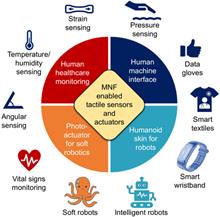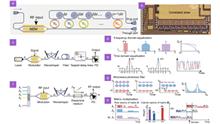 View fulltext
View fulltext
As a combination of fiber optics and nanotechnology, optical micro/nanofiber (MNF) is considered as an important multifunctional building block for fabricating various miniaturized photonic devices. With the rapid progress in flexible opto-electronics, MNF has been emerging as a promising candidate for assembling tactile sensors and soft actuators owing to its unique optical and mechanical properties. This review discusses the advances in MNF enabled tactile sensors and soft actuators, specifically, focusing on the latest research results over the past 5 years and the applications in health monitoring, human-machine interfaces, and robotics. Future prospects and challenges in developing flexible MNF devices are also presented.
Photonic signal processing offers a versatile and promising toolkit for contemporary scenarios ranging from digital optical communication to analog microwave operation. Compared to its electronic counterpart, it eliminates inherent bandwidth limitations and meanwhile exhibits the potential to provide unparalleled scalability and flexibility, particularly through integrated photonics. However, by far the on-chip solutions for optical signal processing are often tailored to specific tasks, which lacks versatility across diverse applications. Here, we propose a streamlined chip-level signal processing architecture that integrates different active and passive building blocks in silicon-on-insulator (SOI) platform with a compact and efficient manner. Comprehensive and in-depth analyses for the architecture are conducted at levels of device, system, and application. Accompanied by appropriate configuring schemes, the photonic circuitry supports loading and processing both analog and digital signals simultaneously. Three distinct tasks are facilitated with one single chip across several mainstream fields, spanning optical computing, microwave photonics, and optical communications. Notably, it has demonstrated competitive performance in functions like image processing, spectrum filtering, and electro-optical bandwidth equalization. Boasting high universality and a compact form factor, the proposed architecture is poised to be instrumental for next-generation functional fusion systems.










